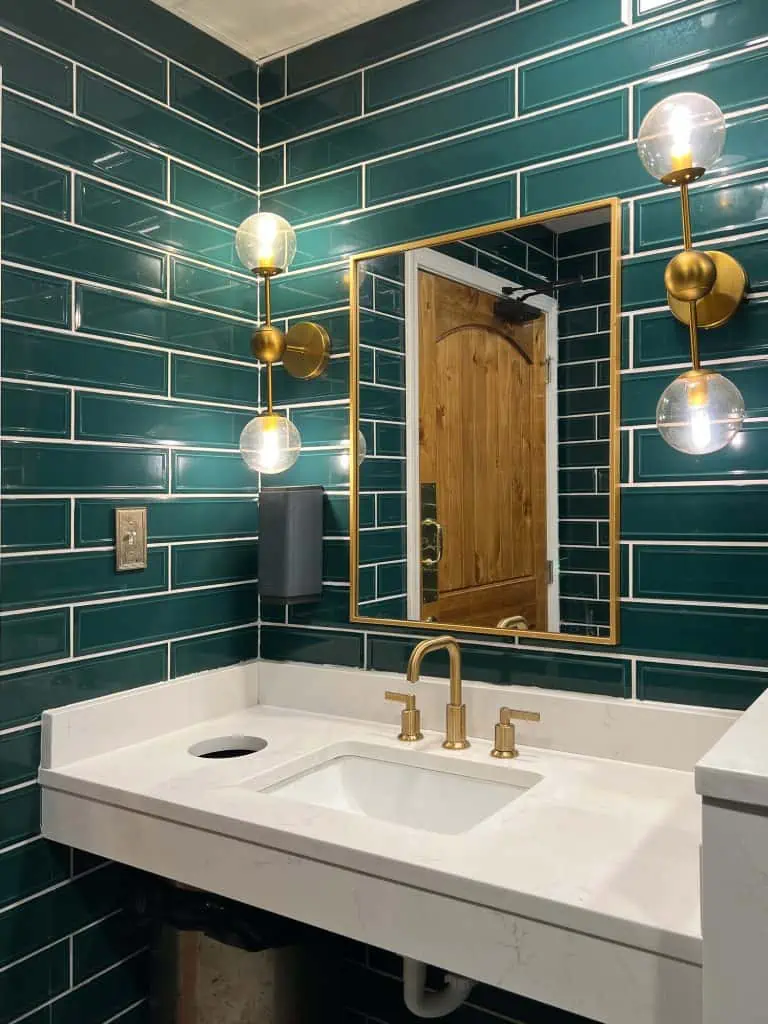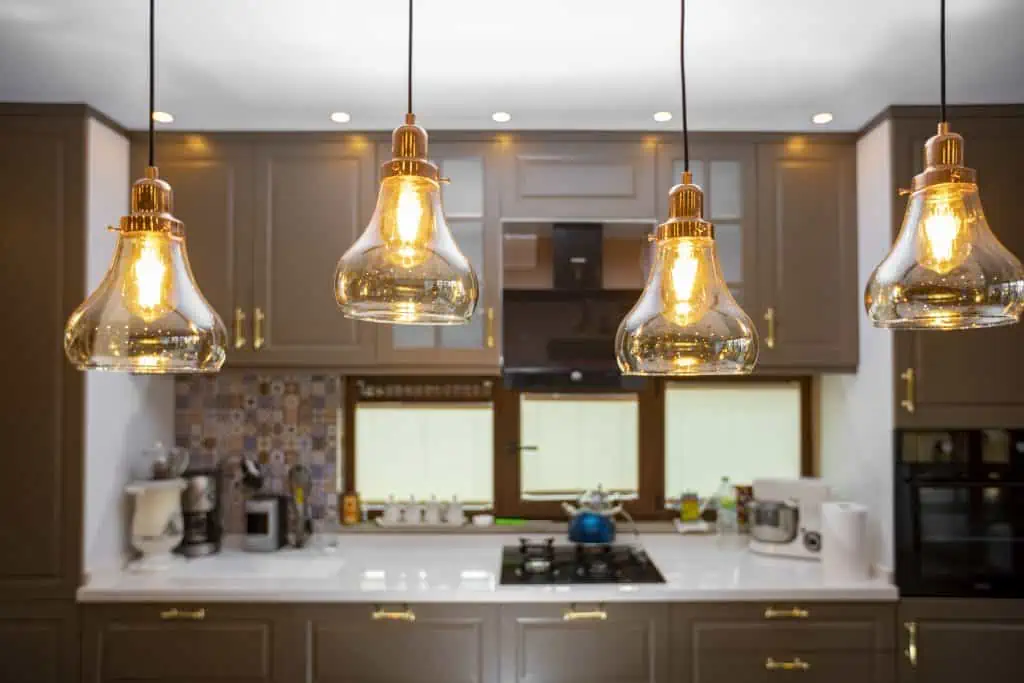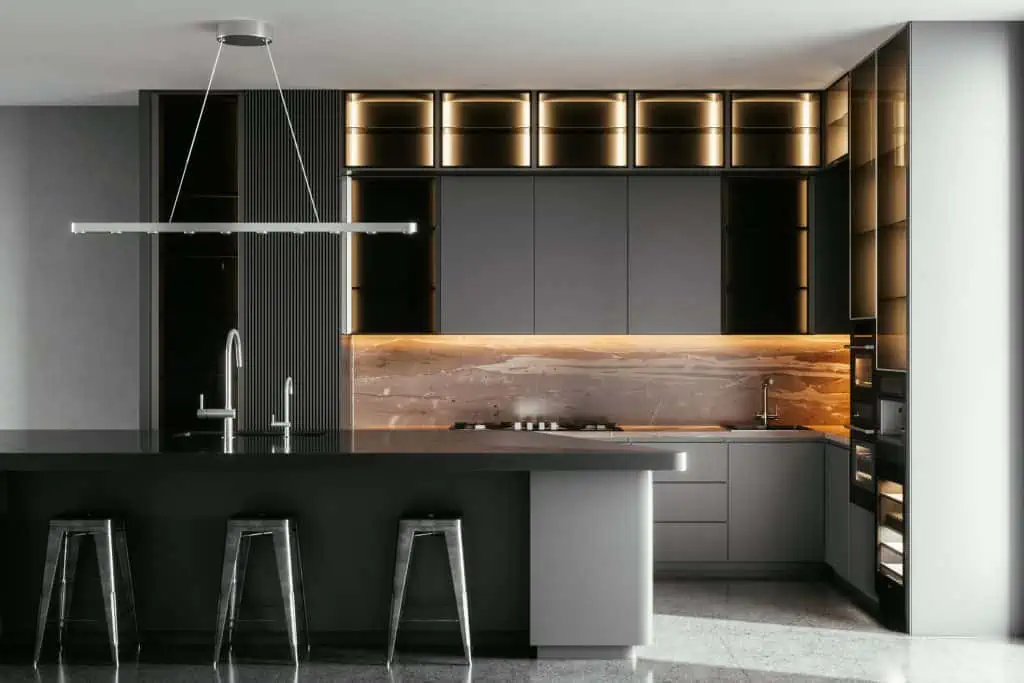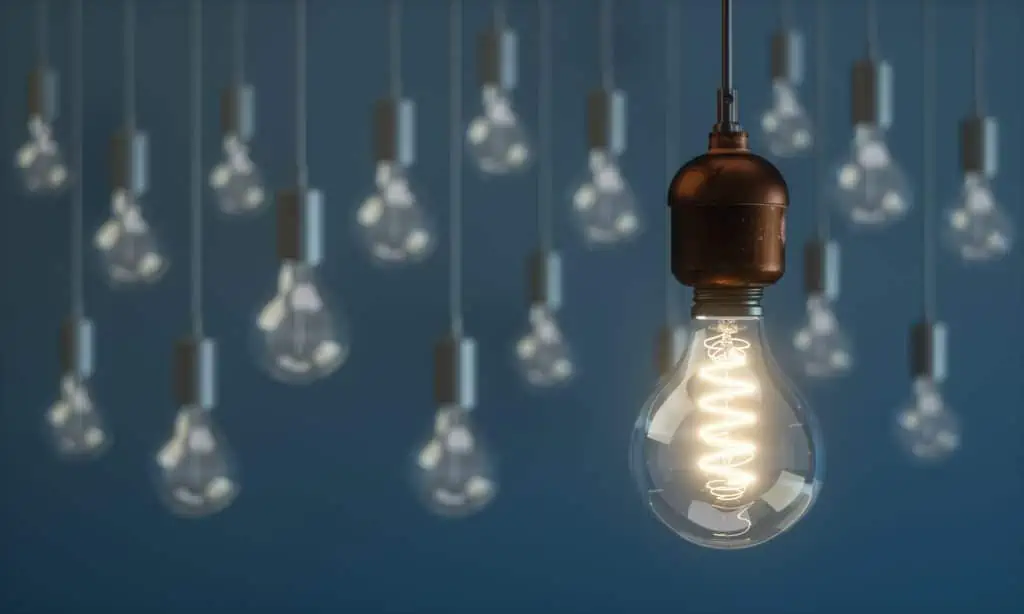When it comes to interior lighting, the kitchen and bathroom often receive the least consideration from homeowners. Many people are unsure how much to invest in these rooms, but it’s essential to recognize the significance of lighting in these spaces. Proper lighting is crucial for completing critical tasks and creating the right ambiance. Ken Spears Construction explores the key factors to consider when selecting bathroom and kitchen lighting for your remodel.
Bathroom Lighting

The lighting in your bathroom should create a relaxing and rejuvenating atmosphere. To achieve this, it’s essential to have a layered lighting plan. Most lighting should be focused on task lighting for activities like showering, shaving, and applying makeup. Additionally, minor lighting sources can be used to set the mood.
Task Lighting
Vanity lighting plays a vital role in the bathroom. Instead of placing the lights directly above the vanity mirror, which can create unflattering shadows, it’s best to position them on either side. This placement ensures that the light is evenly distributed across the face, providing optimal visibility.
Shower Lighting
A dedicated shower fixture in smaller bathrooms with clear glass doors may be unnecessary. However, a recessed light with a glass lens is best for larger bathrooms or those with opaque shower enclosures. Similar recessed fixtures can also work well over freestanding tubs or near the toilet.
Ambient Lighting
Ambient lighting serves as “fill-in” light and substitutes for natural light. Typically, a central surface-mounted ceiling light is used for this purpose. However, for a more exciting and stylish option, consider using a pendant lamp or chandelier as your ambient lighting in the bathroom.
Accent and Recessed Lighting
To add an extra layer of light and enhance the bathroom’s visual appeal, consider using small, recessed spotlights to highlight decorative art pieces or beautiful powder room basins.
Bathroom Lighting Considerations
Include Dimmer Lights
Dimmer lights offer absolute control over the lighting and mood of the room. Moreover, they also help conserve energy. By dimming a bulb by just 10 percent, its lifespan can be doubled. It’s important to note that different light sources require specific dimmers. Incandescent or halogen bulbs need incandescent dimmers, while low-voltage and fluorescent fixtures require compatible dimmers. If buzzing occurs when bulbs are dimmed, switching to a lower-watt bulb can often eliminate the noise.
Safety First
While aesthetics are crucial, safety should always be the top priority when lighting your bathroom. Since electricity and water are a potentially lethal combination, extra precautions must be taken. The National Electric Code mandates using ground-fault circuit interrupters (GFCIs) in all new outlets. Even with a GFCI, avoiding placing freestanding plug-in lamps near sinks or tubs is crucial.
Kitchen Lighting

Proper lighting in the kitchen is essential for both functionality and creating a pleasant atmosphere. It involves more than just selecting stylish fixtures; it requires a well-thought-out plan that integrates lighting into the architectural and decorative details of the space.
The Four Layers of Kitchen Lighting
Similar to bathrooms, lighting in the kitchen should be applied in layers. No single light fixture can address all lighting needs in the kitchen. Here are the four essential layers of kitchen lighting:
1. Task Lighting: This lighting is focused on workspaces, such as countertops and pantry closets, to ensure clear visibility during food preparation and organization.
2. Accent Lighting: Accent lighting adds depth and dimension to the kitchen. It can be achieved through recessed adjustable fixtures and track lights, highlighting specific areas or features.
3. Decorative Lighting: Decorative lighting serves as the eye candy of the kitchen. It adds interest and personality to the space, such as chandeliers and candlestick-type wall sconces. While it illuminates the area, its primary purpose is to draw attention to itself.
4. Ambient Lighting: Ambient lighting provides a gentle overall illumination that fills the room and bounces off the ceiling. Pendant-hung indirect fixtures, opaque wall sconces, and torchieres are lighting options that create ambient lighting in the kitchen.
Kitchen Lighting Considerations
Set The Mood
Kitchen lighting should harmonize with the adjacent areas of your home, especially in open floor plan layouts. When selecting fixtures, consider how they relate to other rooms visible from the kitchen. While matching isn’t necessary, there should be a visual connection. For a bold statement, choose oversized pendants that add a touch of personality to the space.
Try Translucent Fixtures
Instead of opaque fixtures, consider using a lens on the bottom to hide the bulbs while providing a warm glow. These translucent fixtures can enhance the overall aesthetics of the kitchen.
Opt for Different Shapes
Consider using fixtures with unconventional shapes, like rectangular box-shaped lights or drum-shaped fixtures, to add visual interest. These unique designs can make a statement and elevate the look of your kitchen.
Shed Light on Artwork
As kitchens become more of a living and gathering space, incorporating artwork on the walls is becoming increasingly popular. Install recessed, adjustable fixtures to highlight art pieces and create a focal point in the kitchen.
Give a Glow to Cabinets

Glass-front cabinets or open shelving can be softly lit from the inside to showcase pretty pottery or favorite China. This gentle illumination adds a touch of elegance and warmth to your kitchen.
Include Toe Kick Lights
Installing lights underneath base cabinets to illuminate the floor beneath adds ambiance and serves as a functional night light.
Hide Under-Counter Lighting
Adding lights underneath your kitchen cabinets can enhance visibility into drawers and create an illuminated effect in darker areas of your kitchen.
It’s All in the Bulb

Whether kitchen or bathroom lighting, choosing the right bulbs is equally important as selecting the appropriate fixtures. Consider the following three qualities when selecting energy-efficient light bulbs for your kitchen and bathroom:
Color Temperature
Look for bulbs with a color temperature ranging from 2700 to 3000 Kelvin. This range closely matches the color temperature of incandescent lighting and ensures a cohesive look throughout your home.
CRI Rating
Color Rendering Index (CRI) is crucial as it determines how colors are perceived under light. Opt for bulbs with a CRI of 80 or higher to ensure accurate color representation.
Energy Star Certification
Energy Star-certified bulbs have undergone longevity testing and meet the minimum requirement of an 80 CRI. Choosing these bulbs ensures energy efficiency and longevity.
Practical Tips for Lighting a Kitchen
Pair Your Lights with Dimmers
Having the ability to adjust light levels in the kitchen is essential. Bright, focused lighting is helpful during cooking or cleaning, while dimmed lights create a cozy ambiance for dining and conversation. Install dimmer switches to control the intensity of your kitchen lighting and set the desired mood.
Scale Your Decorative Lighting
The size of your kitchen should dictate the scale of your decorative lighting. In larger kitchens, chandeliers, hanging pendants, and other eye-catching fixtures are more significant in adding visual interest and serving as focal points.
Use Smart Lighting
Embrace the future of smart homes by incorporating smart lighting systems. With centralized control through your phone or tablet, you can preset and manage the lighting in all rooms, including the kitchen. Smart lighting offers convenience, energy efficiency, and customization options.
Let Ken Spears Construction Set the Right Tone for Your Remodeling Project
Consider the importance of appropriate lighting when remodeling your bathroom and kitchen. You can create functional and visually appealing spaces by following these guidelines and considering factors such as task lighting, ambient lighting, dimmers, and bulb selection. The right lighting choices will enhance your daily activities, set the desired mood, and make your bathroom and kitchen stand out in style and functionality.
Ken Spears Construction is here to provide comprehensive support at every step when it comes to remodeling your home, including the intricate task of lighting selection. From the moment we meet for your initial consultation to the final finishing touches, our dedicated team of experienced professionals is committed to delivering outstanding results. We understand that embarking on a remodeling journey can be overwhelming, so we prioritize making the process stress-free, ensuring your utmost satisfaction with the result. Schedule your complimentary in-home consultation today. Explore our portfolio showcasing our exceptional craftsmanship and find further inspiration in our informative remodeling blog. With Ken Spears Construction, your remodeling dreams become a reality of enduring quality.

